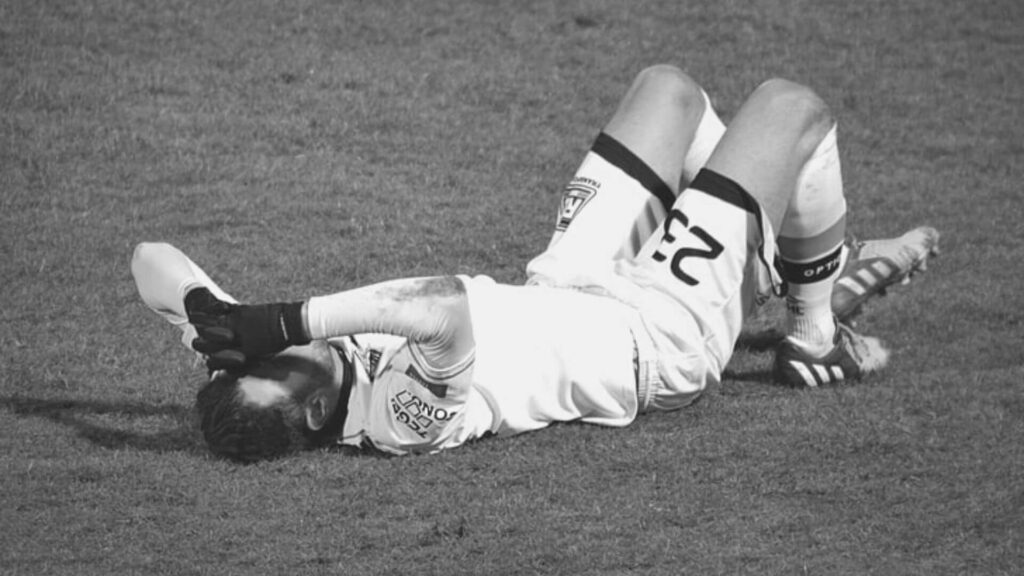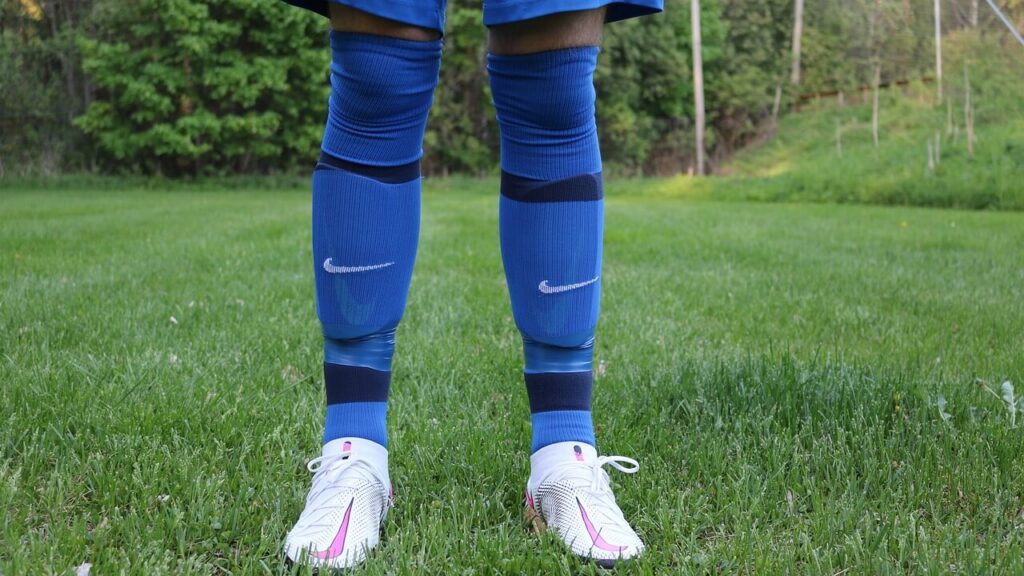As soccer players, we all know that shin guards are a crucial piece of equipment. They protect our shins from painful and potentially dangerous impacts during a game. But when did they become mandatory?
In this article, we’ll explore the history of shin guards in soccer and answer this burning question.
Let’s jump right in.
Quick Navigation
- When did Shin Guards Become Mandatory in Soccer?
- The Role of Referees in Enforcing Shin Guard Rules During Games
- Impact of Shin Guard Technology on Player Safety and Performance
- The use of Shin Guards in amateur and recreational soccer leagues.
- Famous soccer players have suffered severe injuries as a result of not wearing Shin Guards
- Final Word
When did Shin Guards Become Mandatory in Soccer?
Shin guards became mandatory in professional soccer by FIFA in the 1990 World Cup. However, some individual leagues and organizations had made shin guards mandatory before then.
Back in History
The early days of soccer were rough and tumble. Players didn’t wear any protective gear, and injuries were common. The need for safety equipment became clear as the sport became more popular.

That’s why in the early 1900s, leather shin guards were introduced, but they were still optional.
This was a significant step forward for player safety. The decision was made after a series of serious injuries occurred on the field. It was clear that something needed to be done to protect players.
Shin Guards in Modern Game
Despite the mandatory requirement for shin guards in professional soccer, many youth leagues still leave it up to the player’s discretion. This is a concerning trend as shin guards are just as important in youth soccer as they are in the professional game.
Parents and coaches need to stress the importance of wearing shin guards to their young players.
In addition to protecting against injury, shin guards can also improve a player’s performance. When players know they are protected, they can focus on their game and play with more confidence. This can lead to better performance and more wins for the team.
It’s worth noting that different leagues and organizations may have their own specific rules about shin guards. For example, FIFA requires that socks must cover shin guards, and they cannot have any sharp or dangerous edges. It’s important to check with your league or organization to make sure your shin guards meet the requirements.
==>> You can also read the difference between shin guards and shin pads here.
The First Shin Guard Made
The first shin guards were made of leather and had little padding. They were heavy and uncomfortable, and some players even complained that they hindered their performance.
But as technology improved, so did the design of shin guards.
Today’s shin guards are made of lightweight materials like plastic and foam, providing much better protection than their leather predecessors.
==>> Read more about what soccer shin guards are made of here
The Role of Referees in Enforcing Shin Guard Rules During Games
Referees are responsible for ensuring that all players are wearing shin guards that meet the requirements set by their league or organization.
This includes making sure that the shin guards are covered by the socks and do not have any sharp or dangerous edges.

Referees may also check the fit and size of a player’s shin guards to ensure they provide adequate protection.
If a player is found to be not wearing proper shin guards, the referee has the authority to issue a warning or even eject the player from the game.
By enforcing these rules, referees help to ensure the safety of all players on the field.
Impact of Shin Guard Technology on Player Safety and Performance
The impact of shin guard technology on player safety and performance has been significant in recent years.
Modern shin guards are made of lightweight materials like plastic and foam, which provide much better protection than older leather shin guards. They are also designed to fit better and be more comfortable, allowing players to move more freely and perform better on the field.
The technology has also allowed for the development of shin guards with advanced features, such as ventilation systems and shock-absorbing materials, that further improve player safety and performance.
With continued research and development, shin guards are likely to become even more advanced, making soccer an even safer and more enjoyable sport for players of all ages and skill levels.
The use of Shin Guards in amateur and recreational soccer leagues.

Even though the use of shin guards in amateur and recreational soccer leagues is not compulsory, it is just as important as in professional leagues.
Even though the level of play may not be as high, the risk of injury is still present, and players should take precautions to protect themselves.
In many cases, amateur and recreational leagues may have even stricter rules about shin guard use than professional leagues, as they want to ensure the safety of all players on the field.
Players in these leagues should make sure they have the appropriate shin guards for their level of play, and that they fit properly and are in good condition.
Famous soccer players have suffered severe injuries as a result of not wearing Shin Guards
There are many stories of famous soccer players who have suffered severe injuries as a result of not wearing shin guards.
Perhaps one of the most well-known examples is Brazilian legend Pele, who suffered a fractured fibula in the 1962 World Cup while not wearing shin guards.
Another notable example is French striker Djibril Cisse, who suffered a horrific injury in 2004 while playing for Liverpool. Cisse’s tibia and fibula were broken in a challenge with Blackburn’s Jay McEveley, and the injury was so severe that Cisse’s shin bone pierced through the skin. While Cisse was wearing shin guards at the time of the injury, they were not adequate to prevent such a severe injury.
These stories serve as a reminder of the importance of wearing proper shin guards in soccer, regardless of skill level or experience. Even the most talented players can be at risk of serious injury without the proper protection.
Final Word
In conclusion, shin guards have come a long way since their introduction in the early 1900s. They are now a mandatory piece of equipment in professional soccer and for good reason.
They protect players from potentially serious injuries and can even improve their performance on the field.
It’s important for all soccer players, regardless of age or skill level, to wear shin guards.
Not only is it required by many organizations, but it’s also just good common sense.
So the next time you hit the field, make sure you have your shin guards on and ready to go. Your shins will thank you!
Read my article on how to pick the right shin guards here.

